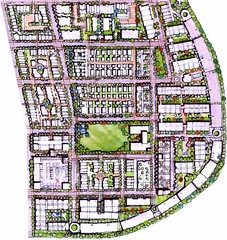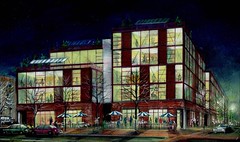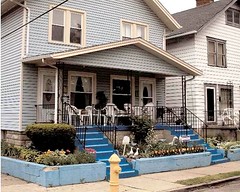With all political eyes on Ohio, here’s a Buckeye smart growth story

Posted November 3, 2008 at 1:46PM
If you're reading this blog, chances are that, like me, you've also been paying attention to this civic event that is going to be happening across the country tomorrow. And no battleground state has been receiving more attention from the press and the candidates than Joe the Plumber's home state of Ohio.
(I hope for your sake that you aren't as obsessed as I am about all this.)
So, as long as we are thinking about Ohio anyway, allow me to redirect your attention to some really good smart growth work that is being done in its state  capital, Columbus. Writing in Planning magazine, Jim Romeo reports (APA membership required to read link) that Mayor Michael Coleman has committed his city to "grow outward with a plan and inward with a purpose," a phrase that Coleman featured in his own 2007 campaign.
capital, Columbus. Writing in Planning magazine, Jim Romeo reports (APA membership required to read link) that Mayor Michael Coleman has committed his city to "grow outward with a plan and inward with a purpose," a phrase that Coleman featured in his own 2007 campaign.
One of the major results of the city's commitment (which actually dates back more than a decade) has been very good redevelopment work on brownfield sites. Romeo's story focuses on two of the best, Jeffrey Place and Weinland Park.
Jeffrey Place (site plan above) sits on the former site of the Jeffrey Manufacturing Company in a downtown area called Italian Village. The buildings on the 41.5-acre site, where the company produced coal mining equipment for the better part of a century, had been demolished in 1986. Redevelopment was eventually jump-started with city and state funding for infrastructure and cleanup, and is now being pursued by the private company National Community Builders, with a master plan by Acock & Associates.
When completed, Jeffrey Place will house about 4000 residents and workers in 1120 homes and 200,000 square feet of commercial space, including a grocery store and rooftop pool.  In addition to superior walkability, easy access to public transit and more than 10 percent of the property devoted to green space, the developer's press release highlights the environmental features of the site's North Block parcel, including "geothermal heating and cooling, the region's largest residential solar panel array, carport roofs planted with year-round vegetation, and storm water runoff and retention irrigation." The project also recycled 90,000 tons of concrete on site and reused it in the development's infrastructure.
In addition to superior walkability, easy access to public transit and more than 10 percent of the property devoted to green space, the developer's press release highlights the environmental features of the site's North Block parcel, including "geothermal heating and cooling, the region's largest residential solar panel array, carport roofs planted with year-round vegetation, and storm water runoff and retention irrigation." The project also recycled 90,000 tons of concrete on site and reused it in the development's infrastructure.
Jeffrey Place has adopted an environmental charter and the North Block is participating in the pilot program of LEED for Neighborhood Development. The development is taking advantage of a number of innovative financing techniques and cooperation from the city, all detailed in their highly informative press kit.
The Weinland Park neighborhood, just north of the Jeffrey site and close to the Ohio State campus, has a mix of stable housing and deteriorating properties, including abandoned lots and multiple brownfield sites. It occupies one-third of a square mile on a traditional street grid, and currently houses about 5000 residents in about 2000 homes. This is about 2000 fewer residents than the neighborhood housed 40 years ago. It is ripe for enlightened attention.
And that is just what it is getting. The Weinland Park Neighborhood Plan, developed by the city planning division, is committed to mixed-use redevelopment that creates economic opportunity along with a broad range of affordable and market-rate housing options that will result in substantial improvements to the neighborhood without gentrification. The plan was developed with the assistance of many people and institutions, including my friends at Goody Clancy architects in Boston.
Goody Clancy helped the principals identify specific opportunity areas for redevelopment, including sections with currently abandoned properties, along with a strategy for helping current homeowners make repairs to their homes.  The opportunity areas include an entryway area into the neighborhood, development around a signature new park along one of the main corridors, and two abandoned manufacturing sites. The plan also makes recommendations for upgrading social services to improve residents' "financial literacy," focus on youth and families, and celebrate neighborhood diversity.
The opportunity areas include an entryway area into the neighborhood, development around a signature new park along one of the main corridors, and two abandoned manufacturing sites. The plan also makes recommendations for upgrading social services to improve residents' "financial literacy," focus on youth and families, and celebrate neighborhood diversity.
There has been a tremendous amount of community involvement in the plan, which has been endorsed by the Weinland Park Community Civic Association. For much more, and a good lesson in the ingredients required to help a struggling community upgrade itself, see the Neighborhood Plan.
No matter what you think of the way Ohio votes, we can all be proud of what its state capital is doing for redevelopment.
No political comments, please. Everything else is welcome and encouraged!

